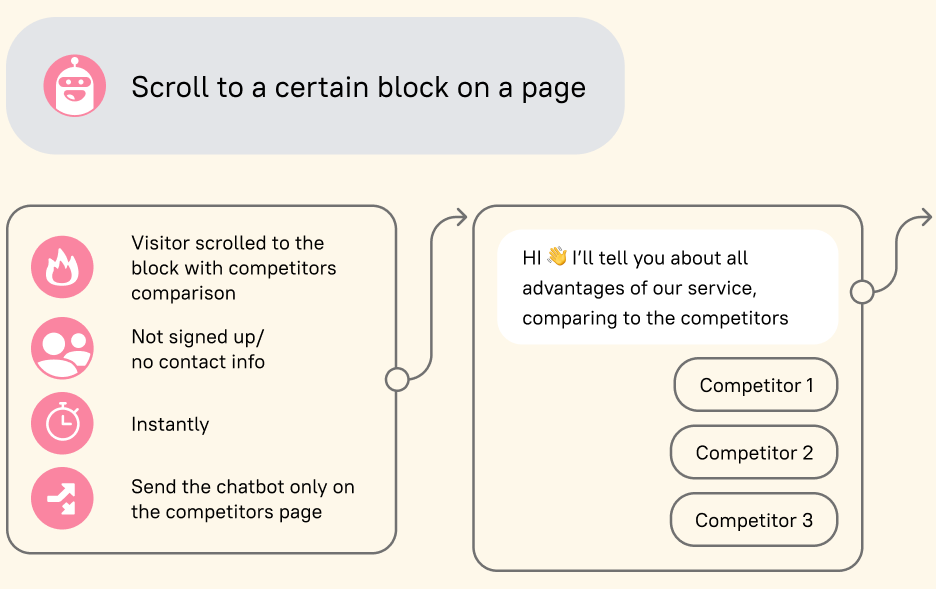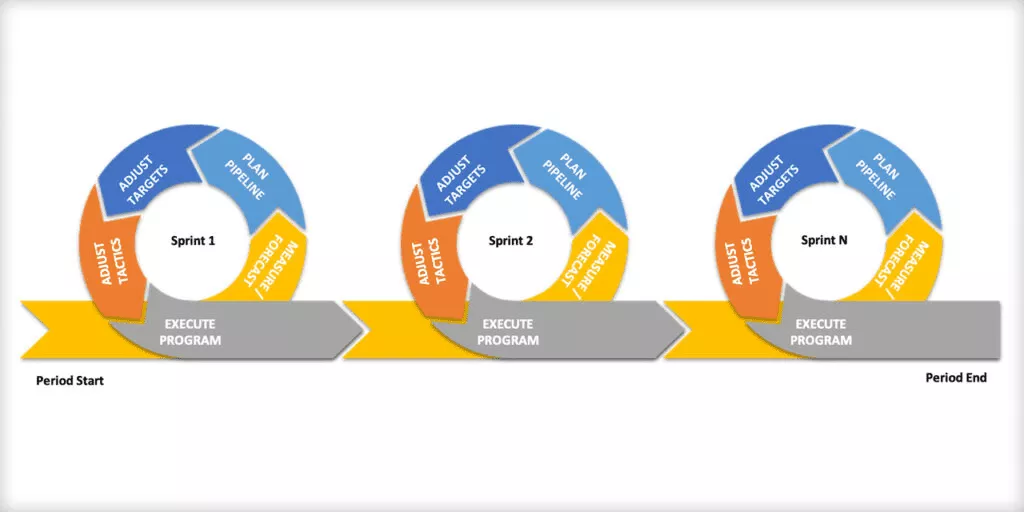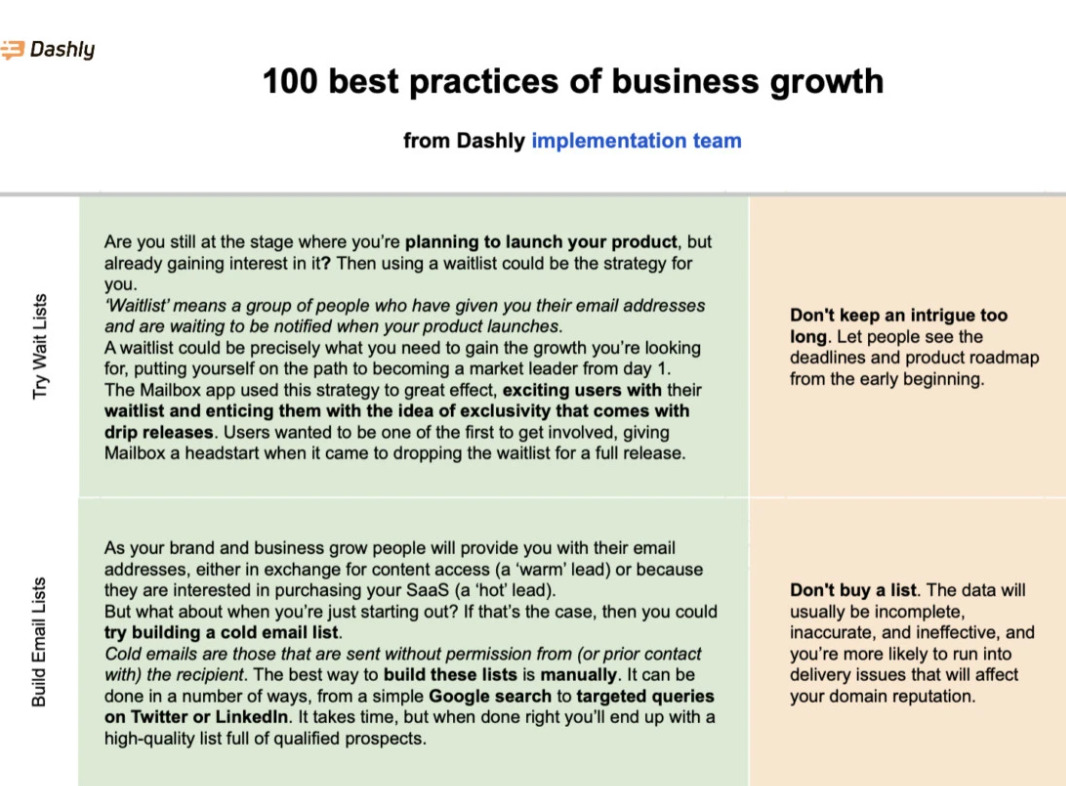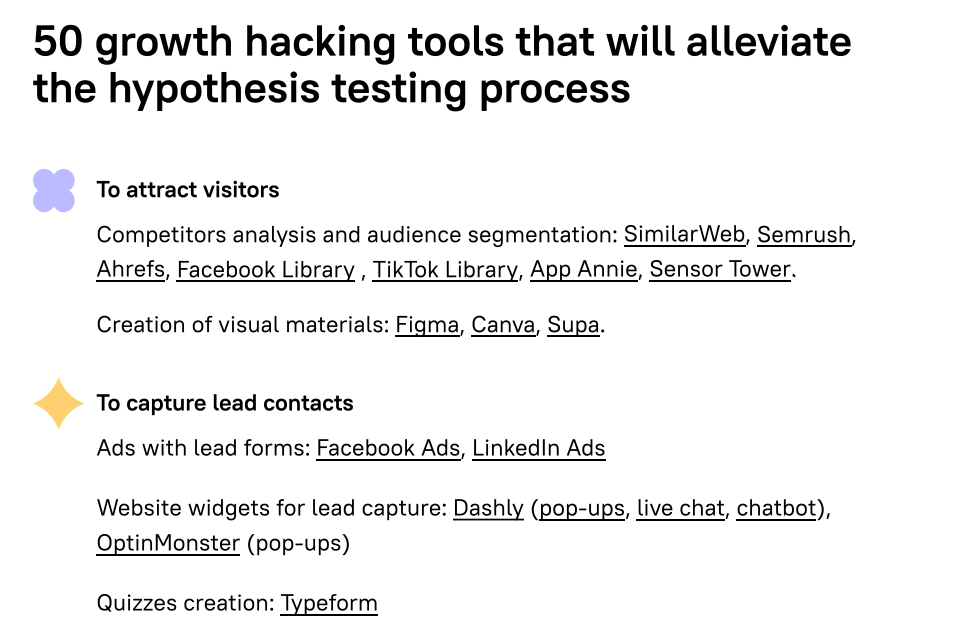Skyrocket your company revenue with a complete guide to RevOps Revenue Operations
Discover the RevOps formula and how it can utterly transform your company’s financial performance with insights from our experts.

Part 1: Skyrocket your revenue with a complete guide to RevOps Revenue Operations
Part 2: Beginner’s guide to RevOps tech stack
Part 3: 13 revops best practices companies follow this year
Part 4: Rev Ops vs Sales Ops: Know the difference
Part 5: 10 revops metrics and KPIs to track your revenue operations performance
Part 6: Unlocking success: the ultimate revenue growth framework
Are you looking to streamline your business operations and maximize revenue? If so, then you need to implement Revenue Operations (RevOps) into your business strategy.
According to a recent study from SiriusDecisions, businesses that have implemented a RevOps strategy reported a 19% increase in revenue within a year.
This revops guide will provide you with a comprehensive overview of this business model, including its definition, best practices, and implementation strategies. We’ll also highlight some of the top growth marketing tools that can help you implement RevOps into your workflow.
So, whether you’re a small business owner or a seasoned entrepreneur, this guide is a must-read for anyone looking for customer led growth.
Let’s get started!
Test RevOps hypotheses quickly and without developers with Dashly

What is RevOps?
RevOps, or Revenue Operations, is a business strategy that aligns sales, marketing, and customer service teams to create a streamlined and efficient revenue-generating process. This relatively new business practice has become increasingly popular in recent years as businesses look for ways to maximize revenue without sacrificing customer experiences.
At its core, revenue operations are all about breaking down silos and creating a cohesive and integrated approach to revenue generation. It’s a holistic strategy that looks at the entire customer journey from start to finish, and ensures that every part of the revenue-generating process is optimized for success.
But what does RevOps really mean? Simply put, it’s all about revenue.
The goal of RevOps is to maximize revenue while minimizing costs, by creating a unified revenue-generating model that incorporates every aspect of the customer journey.
The RevOps model typically involves several key components, including:
- data analytics,
- process automation,
- Customer experience
- and cross-functional collaboration.
By leveraging these tools and strategies, businesses can identify areas of improvement and optimize their revenue-generating processes more effectively.
So, what is the RevOps definition?
In essence, it’s a business strategy that combines the best practices of sales, marketing, and customer service teams to maximize revenue and improve customer experiences.
With an integrated approach to revenue generation, businesses can create a more efficient and effective revenue-generating model that drives growth and profitability.
In short, RevOps meaning is all about creating a unified revenue-generating process that incorporates every aspect of the customer journey. Whether you’re a small business owner or a large enterprise, implementing a RevOps model can help you achieve your revenue goals and drive long-term success.
18 business growth experts you should follow this year

What are Growth Loops? How It Can Scale Your Company

Product Led Growth Marketing: hack your product growth

Why is RevOps important? What role does RevOps play in businesses?
RevOps is essential for businesses as it helps improve revenue generation by breaking down internal silos and creating a unified approach to revenue management.
So what does revops actually do?
What problems does RevOps solve?
- Inefficient revenue generation: With a disconnected sales, marketing, and customer service process, many businesses struggle to generate revenue in a streamlined, efficient way.
- Lack of visibility into the sales pipeline: When each department is working in different systems, leaders don’t have a clear overview of the sales pipeline, making it hard to spot any bottlenecks.
- Inaccurate sales forecasting: When there’s no clear consensus on what deals are expected to close in the near term, it becomes challenging to predict revenue growth accurately.
- Limited customer understanding: When each department manages its own portion of the customer relationship, it can be hard to get a holistic view of the customer’s needs and pain points.

Get your free example of growth marketing playbook with 40+ templates for successful experiments
RevOps benefits
There are top five benefits of revops implementation for businesses:
- Streamlined revenue process: By consolidating sales, marketing, and customer service systems, businesses can get a complete view of their revenue-generating process, allowing sales teams to sell more efficiently and close deals faster.
- Increased efficiency: With a more streamlined process and automation of routine tasks, reps can focus more on selling time, which can help in reducing handoff times and errors during handshakes among different teams.
- Improved forecasting accuracy: By creating a more holistic view of the sales pipeline, it becomes easier to make accurate revenue predictions.
- Enhanced customer experience: By breaking down silos and getting a more comprehensive understanding of the customer, businesses can better tailor their interactions to meet the specific needs of their customers.
- Better alignment: Cross-functional collaboration leads to better alignment and accountability across teams, improving the overall organizational culture.
To implement a successful RevOps strategy, companies must focus on the three essential pillars of Processes, Platforms, and People, each of which plays a critical role in ensuring the success of the overall strategy. In the next sections, we’ll explore each of these pillars in detail and examine how businesses can implement them effectively.
Read also: A secret collection of growth marketing services Dashly team uses daily
The 3 Pillars of RevOps
RevOps has been developed around three essential pillars: Processes, Platforms, and People. These three pillars work harmoniously with one another, with each foundational block building upon the last. Achieving focus, clarity, and accountability throughout the organization is only possible if each pillar is properly defined and functioning to its full potential.
- Processes, is all about ensuring the implementation of correct processes that promote collaboration. RevOps uses uniform processes that build accountability and trust within the organization. By working together, converting prospects into loyal customers will be a natural process that will lead to benefits such as shorter sales cycles, improved retention, and more upsells.
- Platforms, is vital to the success of any organization. Accurate information, delivered through streamlined platforms, provides the clear story that an organization needs to be successful. By linking all of your platforms, you can collect real-time information that will help your company understand why and how revenue is being generated or lost. In doing so, individuals can quickly determine their direct and indirect impact on the pipeline.
- People, is centered around the team responsible for creating and managing processes and platforms. Depending on the size of the organization, RevOps can create a specialized team or distribute the responsibilities of a RevOps team among existing members. With the right RevOps team in place, businesses can ensure that the organization operates smoothly and efficiently.
Basically, the last one is the most important. Let’s take a closer look at revops experts.
Read also: Your Growth Marketing Strategy Template with guide and examples
Revops team
There are numerous roles that are critical to the success of a RevOps collective. Here are some of the key roles and responsibilities of а revops specialist within a successful revenue growth marketing team structure:
- RevOps Manager — As mentioned earlier, the RevOps Manager is responsible for overseeing the day-to-day operations of the RevOps team. This individual should have a deep understanding of the company’s revenue generation process and should be able to identify areas where improvements can be made. They are also responsible for measuring the effectiveness of the RevOps strategy and adapting it as needed.
- RevOps Analyst – A data analyst is responsible for collecting and analyzing data on the revenue-generation process. They are responsible for identifying trends and patterns in the data to gain insights into customer behavior, market trends, and the sales funnel.
- Sales Operations Manager — A sales operations manager is responsible for optimizing the sales process and ensuring that sales reps have the resources they need to be successful. They are responsible for developing and implementing sales processes, managing sales support operations, and providing sales enablement training to new reps.
- Marketing Operations Manager — A marketing operations manager is responsible for optimizing the marketing process and ensuring that marketing campaigns are effective. They are responsible for developing and implementing marketing processes, managing marketing support operations, and analyzing the effectiveness of marketing campaigns.
- Customer Success Manager — A customer success manager is responsible for ensuring that customers are happy and successful with the company’s products or services. They are responsible for developing and implementing customer success processes, managing customer support operations, and analyzing customer feedback to identify areas for improvement.
- The Head of RevOps is responsible for overseeing the entire RevOps collective and ensuring that the strategy is aligned with the company’s overall business objectives. Director of revenue operations is also responsible for building and maintaining relationships with key stakeholders, including executives, department heads, and external partners.
Read also: 25 Growth Marketing Books to Skyrocket Success
Additionally, the RevOps collective may be split into smaller sub-teams. Each sub-team can then work on different parts of the process simultaneously. Here’s what such a model could look like in the marketing part of revenue operations:

Another big advantage of the agile model over the waterfall model is speed. By dividing the work, the team can implement changes quickly. On the other hand, the model makes it a bit hard to track progress or identify issues.
To provide RevOps managers with the necessary skills and knowledge, companies offer various training and development opportunities. This may include:
- courses on data analysis,
- sales processes,
- marketing automation,
- customer success,
- project management.
It’s also essential to provide them with examples of the successful revops strategies. This is exactly what we’ll tell about in the next part of this guide.
What does successful revenue operations look like? Revops best practices
Successful revenue operations in the SaaS industry require a data-driven approach to optimize the buyer’s journey, reduce churn, and increase customer lifetime value. This involves close collaboration between sales, marketing, and customer success teams to identify and address bottlenecks in the sales funnel and ensure a seamless experience for the customer.
Here are a few key indicators of successful revenue operations in SaaS:
- Alignment across teams: The sales, marketing, and customer success teams are aligned with shared goals, product metrics framework KPIs, and processes. This involves regular communication and collaboration to improve the customer experience at every touchpoint.
- Data-driven approach: Revenue operations teams rely on data to drive decision-making and optimize the customer journey. This includes tracking and analyzing key metrics such as lead conversion rates, customer acquisition costs, and churn rates.
- Efficient processes: Revenue operations teams implement automation and process improvements to streamline workflows and reduce manual, time-consuming tasks. This helps teams focus on high-value activities and improves the overall customer experience.
- Strong tech stack: A well-integrated tech stack is key to successful revenue operations. Teams use software tools to manage lead generation, customer relationship management, and other critical functions. Sophisticated analytics tools are also used to analyze data and optimize business processes.
Overall, a successful revenue operations strategy in the SaaS industry involves a data-driven approach, efficient processes, and collaboration across teams to drive revenue growth and improve the customer experience.
Here are successful campaigns examples for you: Growth hacking examples to inspire your team
To achieve successful revenue operations, businesses must adopt a cohesive approach that focuses on collaboration, data-driven decision-making, process optimization, and technology integration.
Here are some best practices for implementing revenue operations 👇
Revops best practices
- Foster cross-team collaboration: The success of the revenue operations function depends upon effective collaboration between sales, marketing, and customer success teams. Foster a collaborative culture by breaking down departmental silos and building trust between teams.
- Adopt a data-driven mindset: To optimize the buyer’s journey, revenue operations teams should rely heavily on data to make data-driven decisions. Creating a data-driven culture involves regular reporting, setting up analytics tools, sharing data between teams, and encouraging cross-functional data analysis.
- Optimize processes: To drive efficiencies, revenue operations should facilitate continuous process optimization. This means standardizing processes and aligning teams around defined workflows to ensure everyone is working towards a common goal.
- Implement automation: Automating repetitive tasks is a crucial step in process optimization. Revenue operation teams can implement automation across all aspects of the revenue generating process, right from lead generation to customer retention. Machine learning and AI tools can help marketing teams deliver highly personalized content to prospects, sales teams to automate lead qualification process, and customer success teams to automate support ticket resolution. You can also find Python developers or C# engineers to automate routine tasks.
- Leverage the right technology stack: Choose the right software tools to enhance your revenue operations function. The software stack for each business can vary, including sales tracking, marketing automation, customer support tools, analytics tools and CRM. It’s important to select tools that integrate well with each other to eliminate silos and streamline the workflow.
Thanks! Here’s your copy of 100 growth ideas

By adopting the best practices mentioned above, businesses can optimize the entire revenue generation process and achieve successful revenue operations.
How can I implement RevOps strategy at my company?
Implementing RevOps can be a challenging task, but with the right approach, you can transition to a more integrated and streamlined revenue generation model. Here’s a strategy roadmap that you can follow to implement RevOps in your company:
- Evaluate your current processes and systems: The first step is to evaluate your current sales, marketing, and customer success processes, systems and tools. You need to understand the current issues and where the bottlenecks are in your lead generation, sales processes, onboarding, or customer support processes.
- Define common goals and metrics: The key to a successful RevOps function is creating alignment between sales, marketing, and customer success teams with shared goals, metrics, and incentives. Define common goals and metrics that everyone can work towards.
- Build a cross-functional RevOps team: Establish a dedicated RevOps team that includes members from across sales, marketing, and customer success teams. Give them the authority to manage the shared goals and metrics, and standardize the processes across teams.
- Implement a data infrastructure: Gather data from across the organization to understand the state of the revenue operations, defining the current state and desired state metrics. Build a data infrastructure that can feed clean data to reporting tools how the problems could be solved.
- Select the right automation tools: Automating tasks can lead to a significant increase in revenue generation efficiency. Choose the software and tools based on your business processes, goals and the defined metrics framework.
- Train the team: Provide training for all sales, marketing, and customer success team members about the new RevOps model and the established processes & tools.
- Iterate, Measure & Adjust: Use the data-driven mindset to continuously evaluate the performance and optimize for further improvements. Establish KPI metrics to measure the group performances and individual success of the teams.
Your transition to RevOps will take time, but with the right strategy, it’s achievable. Ensure that all teams in your organization are aligned, all goals are defined and everyone has complete alignment on the established revenue operations metrics. Maintain a regular flow of communication to evaluate the performance and take actions to streamline further.
For more inspo, sign up to a growth marketing newsletter and get regular insights to your inbox.
Read also:
- What is sales enablement? Definite guide + Strategy + Tools for 2024
- How to measure success: 20+ sales enablement metrics to track in 2024
- Harnessing the power of AI sales enablement: 5 strategies to transform your sales process
- 10 steps to building a sales enablement strategy in 2024
- 7-steps guide on how to create an automated sales funnel in 2024: examples & tools
- 7 sales enablement best practices to empower your team and boost performance
- 10 sales enablement tools: Best software to grow your team performance
- Guide on sales enablement team structure: 10 roles and responsibilities
- Mastering sales automation: A comprehensive guide to best practices and tools
- Sales and marketing automation: How to align their workflow to 2x revenue [Dashly example]
- Top 13 sales automation tools to propel your sales strategy
5 popular revops solutions for your tech stack
One critical aspect of RevOps is automation, and there are numerous automation solutions designed to help businesses achieve their revenue goals and streamline their operations. In this part, we’ll explore ten RevOps automation solutions that every business should consider to enhance their revenue generation and stay ahead of the curve.
- Dashly is a revops automation platform that helps businesses manage their customer interactions across multiple channels, including email, popups, chatbots, live chat, and social media.
- LeanData: Provides lead-to-account matching and routing, and analytics to help optimize your revenue generation processes.
- SalesLoft: A sales engagement platform that helps streamline sales processes and optimize team performance through automation and data-driven insights.
- Pardot: A marketing automation platform that helps teams generate high-quality leads and optimize engagement throughout the buyers journey.
- Hubspot: A CRM and marketing platform that helps teams create and manage leads, organize contacts, automate tasks. The platform is popular among small to medium-sized businesses.
- Marketo: A marketing automation platform focused on lead generation, demand generation, and analytics to optimize marketing automation campaigns.
- Salesforce: A revops CRM that provides a platform for lead management, pipeline management, and customer engagement. It is a widely used tool in B2B sales operations organizations.
- Outreach: Provides sales engagement features like sales automation, outreach, and analytics to optimize sales processes.
- Drift: A revops bots platform that helps businesses automate initial stage conversations and enables faster lead generation.
- Gong: Powered by Artificial Intelligence, Gong is a revops software designed to optimize sales effectiveness, coaching, and analytics using their sales engagement data.
Check out the RevOps tech stack to pick the best tools for your team.
Thanks! Here’s your copy of 50 growth hacking tools

Make sure to pick revops software and tools that integrate well with each other and select them for B2B market orientation. This way you can create significant synergies by reducing departmental silos in your revenue operations org chart.
Podcasts and books to inspire your team
Here are five books on Revenue Operations (RevOps) that you might find informative:
- “Revenue Disruption: Game-Changing Sales and Marketing Strategies to Accelerate Growth” by Phil Fernandez
- “Revenue Operations: The Ultimate Guide to Scaling Up Faster and Smarter” by Tyler Holmes & Andrew Mewborn
- “Beyond CRM: The Rise of Customer Lifecycle Marketing” by Patrick Tripp
- “The Revenue Growth Habit: The Simple Art of Growing Your Business by 15% in 15 Minutes Per Day” by Alex Goldfayn
- “Revenue Engine: Why Revenue Performance is the Key to Faster Growth” by Steve Woods, Alex Shootman, and Christine Crandell
Each of these books will provide a unique perspective on revenue operations, whether it be an overview of the field, specific strategies for maximizing revenue, or a dive into the customer lifecycle.
Thanks! Here’s your list of must-read books on growth hacking

Prefer to listen? Here are the best revops podcasts:
- “B2B Growth” by Sweet Fish Media — This podcast covers various B2B topics, including RevOps. The podcast provides a plethora of interviews with experts from different fields.
- “The RevOps Room” by Drift — Drift is one of the leading RevOps platforms and is bringing together experts to talk about revenue operations. This podcast is focused on giving listeners a peek into the minds of RevOps leaders.
- “RevOps and Hops” by Modern Revenue — Modern Revenue is a SaaS consulting company focused on revenue operations. Their podcast is a conversation with RevOps leaders about how they drive growth in their companies.
- “RevOps for the Rest of Us” by Funnel Radio — This podcast is aimed at RevOps leaders who are looking to scale and optimize their operations. The podcast covers topics such as deployment, metrics, and team organization.
- “The Customer Experience Podcast” by Worthix — Worthix is a customer experience platform, but they have a section of their podcast dedicated to revenue operations. This podcast is focused on the customer experience and how RevOps can drive improvements.
And there are revops community list for those who want a live expertise:
- “RevOps Community” on LinkedIn — This is a LinkedIn group dedicated to discussing all aspects of RevOps, including tools, strategies, and best practices.
- “Revenue Collective” — This is a community of sales and marketing professionals, with a focus on driving revenue growth. They offer networking opportunities, training, and events specifically for RevOps professionals.
- “The Revenue Exchange” — This is a community of sales, marketing, and customer success professionals, with a focus on revenue growth and customer experience. Their Slack community is a great place to network and share ideas.
- “RevGenius” — This community covers various aspects of sales, marketing and RevOps, with a focus on shared knowledge and growth. They provide educational resources, networking opportunities, and events that bring together RevOps professionals.
- “Customer Success Network” — While this is not a specifically RevOps-focused community, it is a fantastic place to connect with other customer-centric professionals. Revenue Operations has a critical role in customer success, so joining this community can help you build relationships with other professionals focused on the customer lifecycle.
FAQ on RevOps
What is a revops performance platform
A RevOps performance platform is a software toolset that helps businesses optimize, automate, and analyze their revenue-generating processes. It typically includes features like lead management, sales forecasting, performance analytics, and customer success management to improve revenue growth, streamline operations, and align teams.
What’s the difference between RevOps and sales ops?
Revenue Operations (RevOps) and Sales Operations (SalesOps) are both focused on optimizing revenue, but they differ in scope. While SalesOps is focused solely on sales processes, RevOps encompasses the entire end-to-end revenue generation process across all departments including sales, marketing, and customer success.
One more difference between revops vs sales ops is that RevOps aims to align and optimize revenue-generating activities across an organization to accelerate revenue growth, while SalesOps focuses specifically on streamlining sales processes and improving sales performance.
FinOps vs. RevOps: What’s the difference?
FinOps and RevOps are two different concepts in the world of business operations. FinOps, short for Financial Operations, is focused on optimizing cloud costs and expenditures for a company’s cloud infrastructure. RevOps, on the other hand, is focused on optimizing revenue growth and operations for a company, often in the context of a SaaS business.
While FinOps is primarily concerned with cost optimization in the cloud environment, RevOps is focused on bridging the gap between departments involved in the revenue generation process, such as sales, marketing, and customer success. RevOps also involves the use of data analytics and technology to optimize revenue operations and drive growth for the business.
What are the most important revenue operations metrics?
Revenue operations metrics, also known as revenue KPIs, are critical indicators that help organizations to track their revenue operations performance and identify improvement areas. While the specific KPIs may vary depending on the organization’s industry, structure, and strategy, here are some of the most important revenue operations metrics and KPIs:
- Monthly Recurring Revenue (MRR)
- Customer Lifetime Value (CLTV)
- Conversion Rates
- Gross Annual/ Monthly/Quarterly Sales
- Customer Acquisition Cost (CAC)
- Sales Pipeline Velocity
- Churn Rate
- Net Promoter Score (NPS)
- Customer Retention Rate
- Average Revenue Per User (ARPU)
These revenue operations metrics can help businesses evaluate their revenue operations performance, identify gaps, and make data-based decisions.
Read also:
- Deep dive into growth marketing analytics with Dashly experts
- 22 SaaS growth hack Facebook tactics to boost your business
- B2B growth marketing: accelerating business success
- Demand Generation vs Growth Marketing: Where to focus?
- Growth marketing vs performance marketing: What to choose for your business
- Product led growth metrics: 13 key indicators for SaaS companies to track
- PLG tools: ultimate guide to the best instruments
- Benefits of Product led growth: 12 PLG benefits for your business
- Top 10 product led growth software your competitors use in 2023
- 10 product led growth companies that boost their development right now
- Sales led growth: what is it and why your business needs it
- Growth marketing case studies: 12 stories with detailed tactics and numbers achieved
- RevOps best practices: 13 tactics to implement this year




![13 growth hacking examples tested by Dashly experts [+46 free templates]](https://www.dashly.io/blog/wp-content/uploads/2023/05/Growth-hacking-examples-to-inspire-your-team-720x317.png)
